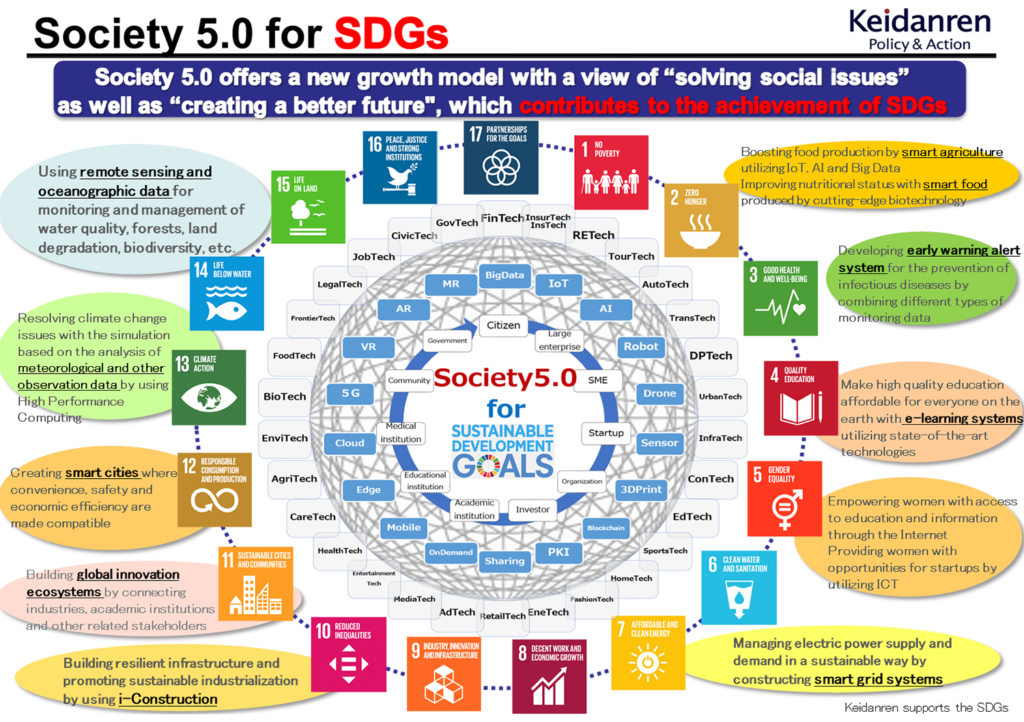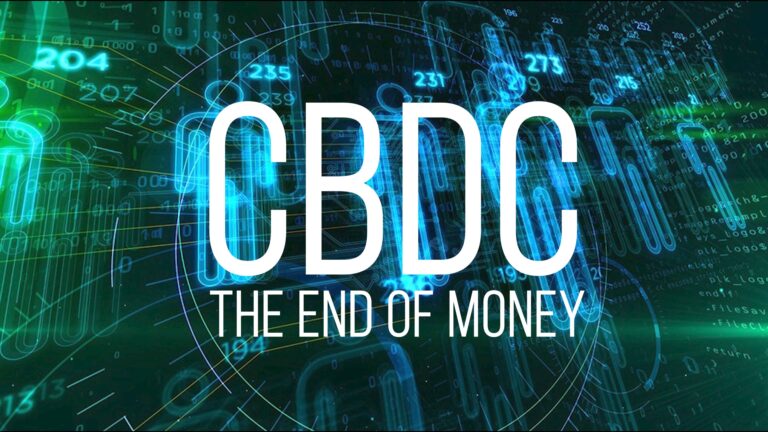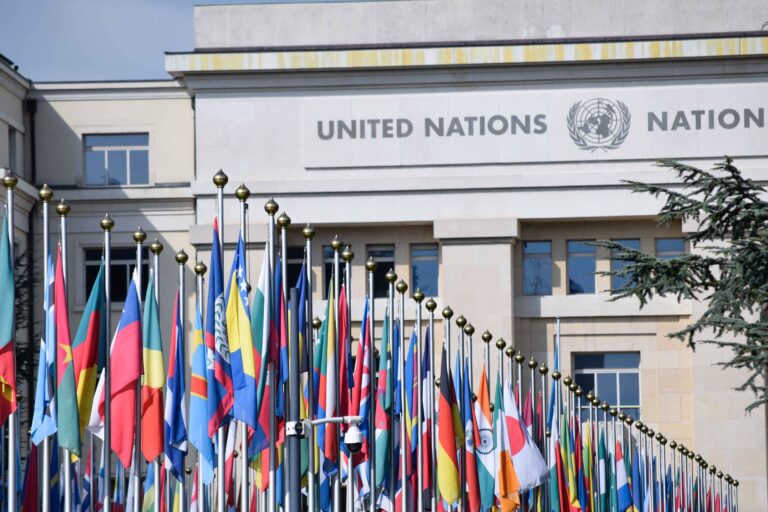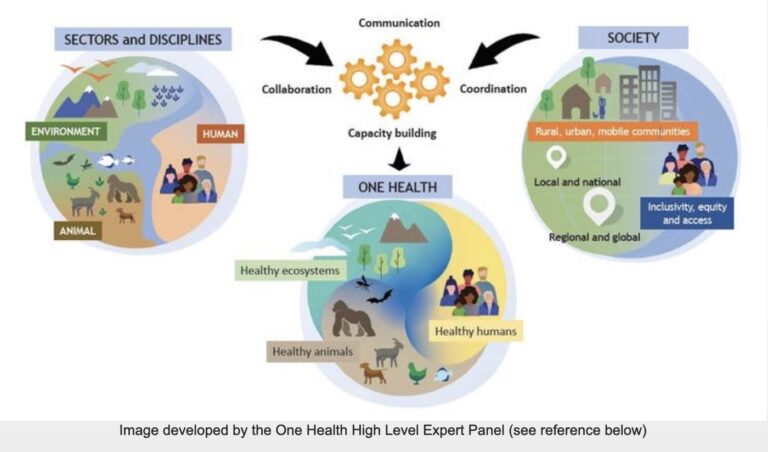This article is a repost with the kind permission from the author and was published in Technocracy News
A week before World Economic Forum’s 2020 meeting, the report Unlocking Technology for the Global Goals was released by WEF’s Global Future Council Working Group on 4IR for Global Public Goods. The report, written in collaboration with the audit and consulting firm PwC, reviews how the advanced technologies of the Fourth Industrial Revolution (4IR) will contribute to meeting the objectives of the 17 Sustainable Development Goals (SDGs) of the United Nations.
The work is part of WEF’s new initiative Frontier 2030, led by Danish Anne Marie Engtoft Larsen (who also contributed to Klaus Schwab’s book Shaping the Fourth Industrial Revolution). Noteworthy is that six of the seven main authors of the report are women. Big Mother coming to our rescue?
The world, if all goes according to plan, is to be completely transformed over the course of a decade. Just like Maurice Strong at the first Stockholm Conference in 1972, the United Nations claims that we have “only ten years” to save the world, and both the UN and WEF have dubbed the next ten years the Decade of Action.
This campaign is very well coordinated and includes governments, international organisations, and representatives of “civil society”. Also onboard are the big tech giants who all see great opportunities for profit (read: tens or even hundreds of billions of dollars) in “saving and improving the world”. All according to WEF’s principle of Public-Private Partnership (originating with Mussolini, implemented in Sweden, and successfully propagated internationally by David Rockefeller).
The United Nation’s 17 Global Goals give a blueprint for what we globally and collectively must do if we are to end extreme poverty, protect our natural environment, revert climate change and create a more sustainable, equal and prosperous future for all. (Unlocking Technology for the Global Goals)
So, what is this technological solution all about?
The report gives an overview on how 4IR could help reach the 17 SDGs. This is a plan that promises Utopia but offers only Technocracy as a solution, with no other options available.
The report presents a technocratic society where the whole world is to be controlled and governed with the help of AI, satellites, robotics, drones, the Internet of Things, and with artificial food on the menu. A global digital panopticon where all human activities are to be recorded, analysed, and corrected with the help of Social Credits – yes, even here in the West!
The Fourth Industrial Revolution is now openly displayed as a powerful weapon against the masses with a digital god (AI) who will judge and control us in real time. This is the ultimate form of social engineering and a serious threat to the freedom of humanity.
In this vision, man is also meant to be altered to become something other than a human being.
It is conceivable, on the other hand, that geocybernetics will follow completely different (or complementary) courses that lie more in the realm of social management. Here the demographic issue overrides other themes: Is there an optimal number of human beings to be supported by the ecosphere ? What is the right mix of condensing people in cities and dispersing them across landscapes? (Hans Joachim Schellnhuber)
WEF’s solution to each of the Sustainable Development Goals
Here are some examples of the many 4th Industrial Revolution measures for Goal 1-16 proposed by the World Economic Forum (with examples from Youtube by corporations marketing their version of each solution).
Goal 1. No poverty
“Poverty alleviation and social protection”
Solutions:
- AI-enabled digital footprint for credit/mobile money access
- Blockchain digital identity solutions to enable economic identities, incl. for refugees
= The first example includes an AI analysing a person’s credit rating through his or her digital footprint (Facebook, Twitter, etc.). The second includes collecting information about individuals through Blockchain technology to ensure their background, skills and also implicitly bad habits and behaviours. Thus, the same system as Social Credits in China, which began as Zhima Credits developed byAnt Financial to assess customer credit-worthiness. Ant Financial (formerly Alipay) is Alibaba’s finance company. Alibaba is a strategic partner of the World Economic Forum and its founder Jack Ma is part of the WEF Board of Trustees).
Goal 2. Zero hunger
“Access to food, improved nutrition and food-production security”
Solutions:
- Low-cost, low-GHG emissions synthetic proteins.
- AI, sensors and blockchain to eliminate spoilage/loss in food value chain, including smart food storage
= Replace even more real food with synthetic edibles and use technology to monitor all processes that handle food, ideally resulting in zero waste or risk that stores run out of supplies of (synthetic) food.
Goal 3. Good health and well-being
“Advancing global health for all ages, and healthcare services”
Solutions:
- Smart homecare, smart wearables and virtual healthcare assistants
- Monitoring and predicting health metrics and disease, including smart implants, wearables
= Get diagnosed by an artificial doctor and have your body monitored via implanted sensors.
Goal 4. Quality education
“Inclusive access to education, quality of education and learning facilities”
Solutions:
- AI-driven assessments to enable the delivery of continuous feedback
- AI-designed digital curriculums, teaching plans and content across devices
= Leave the indoctrination to an AI. It never gets tired and will nag until you give up.
Goal 5. Gender equality
“Facilitating gender equality, protecting and empowering women and girls”
Solutions:
- AI-enabled real-time gender data analytics
- AI to identify unbiased selection to support inclusivity
= Replace human intelligence with an AI to avoid incorrect judgments. Analyse data to identify and correct unbalanced gender representations.
Goal 6. Clean water and sanitation
“Access to and sustainable management of water, and water sanitation”
Solutions:
- AI-enhanced scenario modelling for water infrastructure risks and performance
- Smart water-infrastructure predictive maintenance
= Monitor all water systems. Never mind those who don’t have any water at all.
Goal 7. Affordable and clean energy
“Adopting sustainable energy, and energy-system optimization”
Solutions:
- 4IR-enabled decentralized and coordinated energy-grid management, incl. IoT, AI
- Smart infrastructure for operational efficiency and maintenance
= Monitor all energy systems in real time.
Goal 8. Decent work and economic growth
“Sustained and inclusive job creation and productivity, and improving workers’ rights”
Solutions:
- Robotics for process automation for increased productivity
- AI-enabled digital support hubs for workers
= Replace workers with robots and use AI to guide the remaining workforce.
Goal 9. Industry, infrastructure and innovation
“Building inclusive, resilient and sustainable infrastructure and industry”
Solutions:
- IoT-enabled tracking and optimization of industrial machinery
- Robotics for manufacturing and construction process automation
= Monitor all industrial processes and automate to make people more and more irrelevant.
Goal 10. Reduced inequalities
“Facilitating equality and international collaboration”
Solutions:
- AI-enabled digital footprint for mobile money access
- Next-gen demographics data analytics
= Analyse data to identify and correct unwanted differences between countries and regions.
Goal 11. Sustainable cities and communities
“Building smart, inclusive, safe and resilient urban systems”
Solutions:
- “Sensor-based grid and AI-based urban network management (pollution, waste, water, energy)”
- “Next-gen satellite, drone and IoT landuse detection and management”
= Develop Smart Cities with real-time monitoring using AI, drones and satellites; surveillance cameras with facial recognition and self-driving cars.
Goal 12. Responsible consumption and production
“Supply-chain optimization and sustainable consumption patterns”
Solutions:
- “AI- and IoT-enabled consumption and production data analytics”
- “AI-optimized logistics and distribution networks to minimize costs, emissions and waste”
= Monitor and analyse everyone’s consumption habits in order to lower each individual’s carbon footprint.
Goal 13. Climate action
“Combating climate change and its impacts”
Solutions:
- “Earth management big data platform e.g. monitoring carbon emissions”
- “Smart and transparent land-use management”
= Build a global panopticon for monitoring all processes of the earth system.
Goal 14. Life below water
“Conserving and managing the use of marine habitats and resources”
Solutions:
- “Habitat monitoring and analytics (e.g. monitoring pH and pollution)”
- “AI-enabled data platforms to monitor and manage fishing activity and compliance”
= Monitor the seas and penalise those found guilty of illegal activities.
Goal 15. Life on land
“Protecting and restoring terrestrial ecosystems”
Solutions:
- “Real-time habitat and land-use mapping, monitoring and detection of illegal or adverse activities”
- “4IR-enabled wildlife tracking, monitoring, analytics and pattern forecasting and real-time detection, e.g. disease, animal capture”
= Monitor all forests and penalise those found guilty of illegal activities.
Goal 16. Peace, justice and strong institutions
“Promoting peaceful society, building effective institutions”
Solutions:
- “AI-enabled identity tax fraud identification (using browsing data, retail data and payments history)”
- “Blockchain-enabled citizen loyalty and reward platforms”
= Introduce Social Credits to create obedience to authorities and punish unwanted behaviours.
In addition, a number of technologies are listed that are in a developing phase (low maturity) which could potentially be used to meet the goals. Here we find, among other things:
- Genetic rescue and genome modification for endangered and extinct species and resilience
- Low-cost, low-GHG emissions synthetic proteins (AI and synthetic biology)
- Decoding well-being and longevity using AI and sensors for personalized health maps and sequenced genomes and phenotypic data
- Gene editing (e.g. CRISPR) to tackle human diseases driven by gene mutation
Goal 17: Partnerships for the goals
“Building sustainable global partnerships”
This last goal is not included in WEFs table of 4IR solutions, but both the UN and the Group of 20 (G20) are being strengthened at a rapid pace and the 4IR solutions for each goal that was introduced before the 2019 G20 Summit are strikingly similar.

Risks of the new technology
The WEF report does see some risks with their Brave New World:
For all of the enormous potential that scaling Fourth Industrial Revolution technologies offer for accelerating action to reach the Global Goals, these technologies also have the potential to exacerbate many existing societal challenges, and to create new risks that could hinder the Global Goals.
- The AI-led technology system may act prejudiced and biased.
- It is difficult to achieve full employment if everything is to be automated.
- Control and power over the technology risks being concentrated to a few actors.
Technology solutions, including AI, blockchain, the IoT, cloud services, 5G and quantum computing can consume large amounts of energy due to the computer processing power required and the number of operations or sensors feeding into the digital system or network.
- The advanced technological system consumes enormous amounts of energy.
- AI and computer vision can be used to find and exploit rare raw materials instead of protecting nature.
- Electronic scrap from all the computers, sensors and devices needed for the technology solution can give rise to environmental pollution.
In 2021, the amount of e-waste generated is predicted to grow to 52.2 million tonnes,71 with just 20% formally recycled.
- Abuse of the personal data collected can damage reputation, finances and security.
- Cyberattacks can cripple the system.
Other Warnings
Dirk Helbing, head of the EU project FuturICT, has for some years warned that a fascist surveillance state is about to be built, more advanced than anything ever seen through history. Helbing notes that all functions that a fascist state may need have already been implemented digitally or are being implemented, and can be used on a universal scale at any time.
We are faced with the emergence of a new kind of totalitarianism of global dimensions that must be stopped immediately. An emergency operation is inevitable, if we want to save democracy, freedom, and human dignity. (…) Arguments such as terrorism, cyber threats and climate change have been used to undermine our privacy, our rights, and our democracy.
The sheep have handed the control of the planet over to the wolves. We now need to take it back.
Just as the United Nations has declared the Decade of Action, it is time for all who stand up for free humanity and to reject the technocratic global surveillance state which now threatens us all.








